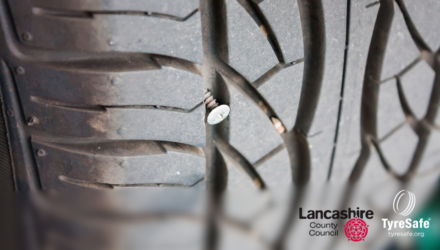Zenzic has today announced the launch of the 2021 Safety Case Framework: The Guidance Edition for self-driving vehicle testing in the UK. This third edition of the Safety Case Framework provides guidance that creates a common safety checklist or language for both technology creators and safety reviewers which covers connected and automated mobility (CAM) testing scenarios from small scale testing at private testing facilities through to trialling on public roads with a remote safety operator.
 Zenzic’s 2021 Safety Case Framework lays out a unified language for technology developers and safety reviewers, supporting technology developers in working towards a safety standard which is valid across a range of testing scenarios. It builds upon the 2019 release of The Code of Practice for Automated Vehicle Trialling by the Department for Transport and the BSI PAS 1881 standard. This also enables safety reviewers to undertake safety checks and ensure any trials meet agreed upon stringent regulations.
Zenzic’s 2021 Safety Case Framework lays out a unified language for technology developers and safety reviewers, supporting technology developers in working towards a safety standard which is valid across a range of testing scenarios. It builds upon the 2019 release of The Code of Practice for Automated Vehicle Trialling by the Department for Transport and the BSI PAS 1881 standard. This also enables safety reviewers to undertake safety checks and ensure any trials meet agreed upon stringent regulations.
Trialling on public roads
The guidance is based upon research into extensive methodologies, the findings of several industry-wide workshops and the Code of Practice for Automated Vehicle Trialling. Self-driving vehicles will also have to adhere to core parts of the Highway Code which relate to hazardous scenarios and sharing road space with vulnerable road users.
Specifically, technology providers will need to demonstrate to a third party how they safely interact with vulnerable road users like pedestrians, cyclists and motorcyclists in line with Rule 204 and Rules 219 to 225 on how to interact with HGVs, emergency services and buses or coaches.
These requirements form but a small part of the framework, which is the first time such a wide range of safety standards, requirements and guidance have been brought together into a single document. Because of this, it provides foundational safety processes for trials on public roads which would not have a safety driver in the car, but would be remotely-supervised, future-proofing the guidance and giving technology creators a pathway to this next stage of self-driving vehicle trials.
Making safety trialling more efficient
The Safety Guidance makes the thorough inspection of safety standards in self-driving vehicle standards more efficient by creating a shared goal which both technology creators and safety reviewers can agree on and work towards. This makes it less costly and time-consuming for organisations looking to take advantage of the range of testing capabilities available across the country, something especially useful for start-ups and smaller technology developers.
The framework consolidates a previously diverse range of requirements which varied from location to location. Previously trialling organisations had to create a new and different safety case from scratch. With the flexibility present in the Safety Case Framework: The Guidance Edition, technology creators can use existing methods or parts of existing safety cases from previous trials, in the UK or abroad, when developing a new trial.
Mark Cracknell, Head of Technology at Zenzic, commented, “Safety is our highest aim at Zenzic, and this guidance makes it much easier for the self-driving industry to ensure any trials taking place have been thoroughly checked.
“To date, there has not been a commonly accepted safety guidance for CAM Testbed UK testing facilities across the country, which meant that moving between testing facilities, or moving from a private test track to testing on public roads required technology creators to apply a new safety methodology each time.
“Much of the technology that allows a vehicle to be self-driving is complex. To make sure these vehicles are as safe as possible we have drawn in an extremely wide range of safety guidance, requirements and standards with the goal of making safety as easy as possible. While the trial operators have a lot of safety rules to follow, the vehicles themselves must follow, at a minimum, the very same straight forward rules that all other road users must follow to be allowed to test on public roads, the Highway Code.”

















